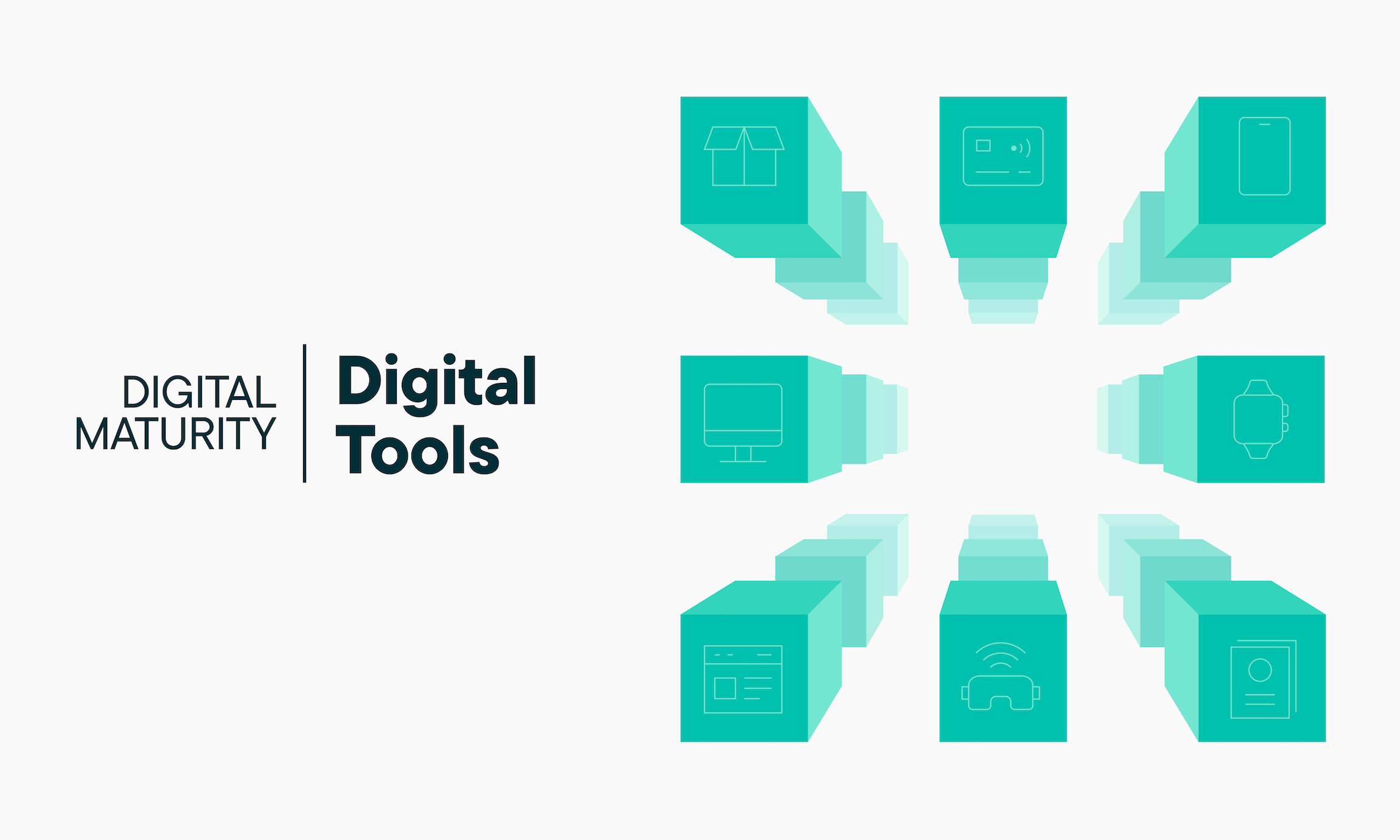
It’s no secret that the digital maturity spectrum in B2B is vast, ranging from businesses with no eCommerce capabilities to outperformers leveraging all things digital to outpace the competition. For B2B leaders driving digital transformation, the first-ever Digital Maturity Assessment by Master B2B and commercetools provides a baseline across four key dimensions: Digital Tools, Customer Experience, Team Culture and Data & Insights.
In the first installment of our series, we’ll explore the “Digital Tools” dimension and what it means for your business.

While B2B practitioners recognize that digital commerce is more essential than ever, implementing it hasn’t always been easy or straightforward.
Last year, 65% of B2B leaders1 stated that eCommerce was broken in their organization, and only 39% of buyers2 reported being delighted with their current suppliers’ ability to tailor digital offerings to their needs. This data highlights a clear gap: Despite the urgent need to digitize, a significant portion of B2B companies aren’t meeting the industry’s current standards or buyer expectations. For scores of manufacturers, wholesalers and distributors globally, achieving digital maturity is a critical strategy for sustainable growth.
More than plugging in new technologies, the journey to enhanced digital maturity is the ultimate framework for empowering organizations to become customer-centric. Equally important is the correlation between a high level of digital maturity with revenue and growth.
While digital maturity encompasses multiple dimensions beyond technology, the effective use of digital tools is central to achieving digital readiness and growth. After all, without the right commerce technology — versatile, flexible and scalable — businesses can’t advance digital maturity and gain the competitive advantage needed to thrive today and tomorrow.
Measuring maturity with a focus on digital tools
The digital maturity model by Master B2B and commercetools places “Digital Tools” as the first dimension to consider in assessing your stage of digital maturity. In a nutshell, this dimension evaluates how much is your organization taking advantage of the technology available to streamline operations and improve customer experiences.
On a scale of 1 to 4 (1 being the lowest rating and 4 the highest), your business can evaluate how it measures up across a range of factors, including:
Inventory and availability: Are all inventory locations (incl. dropship, in-store and distributed order management) reflected in your commerce, offering full stock visibility?
Pricing transparency: Are complex discounting online, configurators and CPQ supported?
Order status: Are advanced notification channels of real-time location tracking available?
Digital marketing: Do you provide integrated multi-channel marketing to provide a single view of the customer?
Site personalization: Do you use predictive models to offer personalized experiences?
Site search: Can your site support robust search and discovery that meets B2B-specific needs?
Core technologies: Do you have essential technologies in your stack, such as CRM, ERP and PIM/DAM?
Organizations in Stage 1 usually don’t provide any of these functionalities — or provide some of those in a rudimentary manner. For instance, it’s estimated that 29% of B2B organizations3 lack eCommerce capabilities, a figure that showcases why digital maturity remains a priority for the B2B sector in the years to come.
The first step in driving digital maturity forward is shifting the leadership mindset. Identifying key stakeholders who can champion digital transformation and secure executive buy-in is a proven strategy for success. The goal is to help leaders recognize how the right digital tools can optimize processes across the business — from product development to sales — ultimately driving growth and higher revenue.
When companies start to advance in their digital maturity, they invest in digital tools according to their business needs, all the while ensuring that other dimensions (Team Culture, Customer Experience, and Data & Insights) evolve alongside technological progress.
Advancing your digital maturity
Companies that understand the value of digital tools and start taking concrete steps to invest in technology are considered to be in Stage 2. While advancing from Stage 1 to Stage 2 represents a shift in mindset regarding the role of digital tools in business, the challenge is that there’s still a lack of digital knowledge and expertise within the organization. At this point, you can scout for digital experts from the outside who have the specialized skills to spearhead digital transformation to a more modern technology stack — and scale effort.
By the time a company hits Stage 3 maturity in the Digital Tools dimension, it has a mostly modern tech system in place that operates in real time. Businesses can confidently call themselves a digitally driven organization, one that’s frequently delivering noteworthy digital wins by leveraging composable architecture.
To reach stage 4 in the Digital Tools dimension, B2B leaders should allot time and budget for their teams to experiment using AI-based tools to solve problems and enhance productivity. Embracing constant change — and having digital tools that allow for adaptability — is a common trait of organizations that have reached this stage. In a nutshell, a company in Stage 4 operates on flexible, scalable tech architecture that’s integrated with all critical systems of record and recognizes tangible results from the transformation.
While only a small number of companies are currently at Stage 4 — especially in the Digital Tools dimension — more B2B leaders are striving to achieve this level. Today, many are pushing boundaries beyond basic eCommerce, leveraging modern technology to create advanced digital experiences that exceed buyer expectations, setting a high bar for the B2B sector as a whole.
From the leading stationery company BIC to digital-first SMB supplier Zoro.com, Stage 4 organizations are proving that bold innovation is no longer the exception — they’re becoming the emerging standard in B2B.
To get a clear picture of where your B2B is now, and what needs to happen to move your business forward, download the full report, Establishing your Baseline: Assessing B2B Digital Maturity.
Sources: 1 Forrester and Zoovu, 2 Dentsu, 3 McKinsey